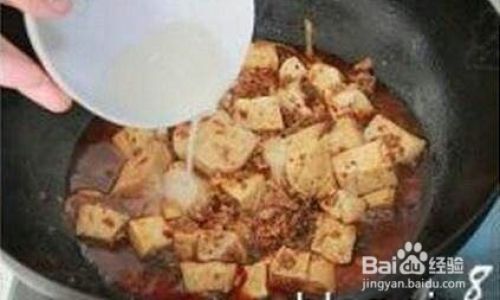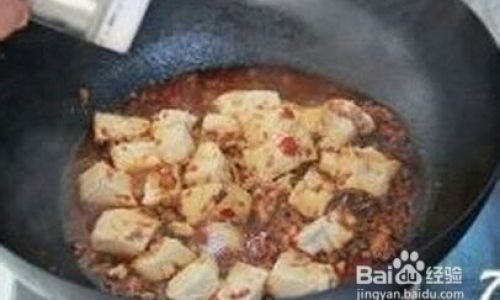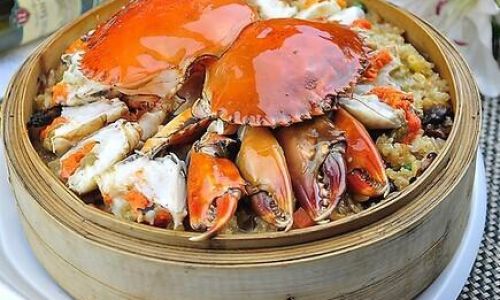Introduction
Mapo tofu, a signature Sichuanese dish, is renowned for its fiery red chili oil, tender tofu, and savory ground pork. This dish, named after a pockmarked woman (Mapo) who sold tofu in Chengdu, China, has become a culinary icon, enjoyed worldwide for its unique blend of flavors. From the fiery heat of Sichuan peppers to the creamy texture of soft tofu, every bite offers a delightful sensory experience.

Cooking Mapo tofu might seem intimidating at first, especially for those unfamiliar with Sichuan cuisine. However, with the right ingredients and techniques, you can recreate this delicious dish at home. This guide will walk you through the process, ensuring you achieve a restaurant-quality Mapo tofu that will delight your taste buds and impress your guests.
Ingredients
Before diving into the cooking process, let’s list down the essential ingredients you’ll need:
- Tofu: Opt for firm or extra-firm tofu to maintain its structure during cooking. Soft tofu tends to disintegrate easily.
- Ground Pork: Traditionally, Mapo tofu uses ground pork, but you can substitute it with chicken, beef, or even shrimp if preferred.
- Bean Paste: Sichuanese doubanjiang (chili bean sauce) is crucial for that authentic flavor. Look for a good-quality brand that balances chili heat with a rich, fermented taste.
- Garlic and Ginger: Freshly minced garlic and ginger add depth and aroma to the dish.
- Green Onions and Scallions: These provide a fresh, slightly sweet contrast to the spicy and savory elements.
- Vegetable Oil: For frying and cooking.
- Chicken or Vegetable Broth: Adds moisture and flavor to the sauce.
- Cornstarch Slurry: Mixed cornstarch and water to thicken the sauce.
- Soy Sauce: For seasoning.
- Shaoxing Wine (optional): Adds a layer of complexity and enhances the flavors.
- Sugar: A pinch to balance the heat and acidity.
- Sichuan Peppercorns: Crushed or toasted for that unique, tingling sensation on your tongue.
- Chili Oil: Adds extra heat and a glossy finish to the dish.
- Sesame Oil (optional): For an additional layer of aroma.
Preparation
-
Prepare the Tofu: Drain the tofu and cut it into small, bite-sized cubes. Blanch the tofu in boiling water for about 2-3 minutes to remove excess moisture and firm up its texture. Drain and set aside. Blanching also helps prevent the tofu from breaking apart during cooking.
-
Prepare the Aromatics: Mince the garlic and ginger finely. Chop the green onions and scallions into small pieces. These will be added at different stages of cooking to build layers of flavor.
-
Toast the Sichuan Peppercorns: If using whole peppercorns, toast them lightly in a dry pan until fragrant. This releases their oils and enhances their flavor. You can then crush them using a mortar and pestle or a spice grinder. Alternatively, use pre-crushed or powdered Sichuan pepper.
Cooking Steps
-
Heat the Oil: In a wok or large skillet, heat about 2-3 tablespoons of vegetable oil over medium-high heat. The oil should be hot but not smoking.
-
Cook the Aromatics: Add the minced garlic and ginger to the hot oil. Stir-fry for about 30 seconds until fragrant. Be careful not to let them burn, as this will make the dish bitter.

-
Add the Ground Pork: Push the aromatics to the side of the wok and add the ground pork to the other side. Break it up with your spoon or spatula and cook until it’s browned and cooked through. Mix the pork with the aromatics and continue to stir-fry until everything is well combined.
-
Add the Bean Paste: Make a well in the center of the pork mixture and add about 2-3 tablespoons of doubanjiang. Stir-fry for another minute, letting the bean paste cook and release its flavors into the oil. The oil will turn a deeper red, indicating that the bean paste is cooked.
-
Season with Soy Sauce and Wine: Add 1-2 tablespoons of soy sauce and, if using, 1 tablespoon of Shaoxing wine. Stir well to combine and cook for another minute, allowing the flavors to meld together.
-
Add Broth: Pour in about 1 cup of chicken or vegetable broth. Stir to combine and bring the mixture to a simmer. Let it simmer for about 5 minutes to allow the flavors to develop further.
-
Thicken the Sauce: In a small bowl, mix together 1 tablespoon of cornstarch with 2 tablespoons of water to create a slurry. Pour this mixture into the simmering sauce, stirring constantly. The sauce will thicken quickly. Adjust the thickness to your liking by adding more cornstarch slurry if necessary.
-
Add the Tofu: Gently fold in the blanched tofu cubes. Be careful not to break them. Let the mixture simmer for another 3-4 minutes, allowing the tofu to absorb the flavors of the sauce.
-
Season and Taste: Taste the sauce and adjust with more soy sauce, sugar, or Sichuan peppercorns if needed. Remember, Mapo tofu should be bold in flavor, with a balance of saltiness, sweetness, heat, and numbing sensation.
-
Finish with Chili Oil and Sesame Oil: Drizzle in about 1-2 teaspoons of chili oil and, if using, a few drops of sesame oil. Stir to combine. The chili oil will add extra heat and a glossy finish to the dish, while the sesame oil will enhance its aroma.
-
Garnish and Serve: Remove the wok from heat and garnish with chopped green onions and scallions. Serve immediately with steamed rice or noodles to soak up the delicious sauce.
Tips for Perfect Mapo Tofu

-
Quality Ingredients: Use high-quality tofu and doubanjiang for the best results. The quality of these ingredients makes a significant difference in the final dish.
-
Blanching Tofu: Blanching tofu firms up its texture and removes excess moisture, preventing it from breaking apart during cooking.
-
Adjusting Heat: Sichuan cuisine is known for its fiery heat. Adjust the amount of chili bean sauce, chili oil, and Sichuan peppercorns according to your taste preference. If you prefer a less spicy version, reduce the quantities accordingly.
-
Balancing Flavors: Mapo tofu should have a balance of flavors – salty, sweet, spicy, and numbing. Taste the sauce frequently and adjust the seasoning as needed.
-
Serving Suggestions: Serve Mapo tofu with steamed rice or noodles to enjoy every last drop of the sauce. It also pairs well with other Sichuanese dishes like kung pao chicken or boiled fish.
Conclusion
Cooking Mapo tofu at home may require some practice, but with the right ingredients and techniques, you can achieve a dish that rivals the best Sichuan restaurants. This guide provides a comprehensive step-by-step process, ensuring you create a delicious, authentic Mapo tofu that will delight your taste buds and impress your guests. Enjoy the process of cooking and savor every bite of this culinary masterpiece. Happy cooking!





0 comments